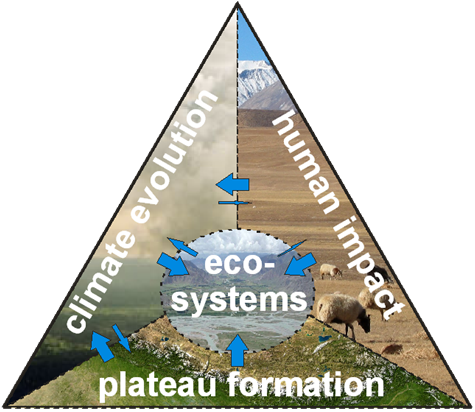Vortrag, The 45th Population Genetics Group Meeting, Nottingham: 04.01.2012 - 07.01.2012
Abstract:
The Cyperaceae Kobresia pygmaea is the most abundant species of the Tibetan Plateau, where it occurs over approximately 450.000 km2 and over an altitudinal range of 2500 m asl. Due to its extensive coverage of up to 98% it has a huge importance for the Tibetan rangelands. This is in contrast to the lack of data on the biology of K. pygmaea. Based on available studies on other species from alpine regions, we expected that clonal growth is the main strategy for population spreading and survival under the harsh conditions of the Tibetan Plateau. To test our hypothesis, we newly established eight K. pygmaea-specific microsatellite primers and applied them to samples collected in a grid-wise fashion. Our results showed evidence for clonal growth but also for high clonal diversity. In contrast to former assumptions, most of the investigated samples were tetraploid rather than diploid. Ploidy levels varied even within populations. These findings were confirmed by chromosome counting and flow cytometry. We conclude that clonal growth is not the main reason for the persistence and dominance of K. pygmaea in Tibet. Instead, sexual regeneration occurs at least occasionally. Adaption towards harsh environmental conditions is facilitated by varying levels of polyploidy.

